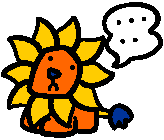
----------------------------------------------------------------
#69 動物園は種の絶滅を防ぐのに貢献しているのではないでしょうか?
----------------------------------------------------------------
動物園側はしばしば、動物園は生息地が破壊されてしまった動物や、
その他の理由(狩猟など)で自然界では絶滅してしまった動物の種を保
存するための「ノアの箱船」なのだ、と主張します。
絶滅の要因が取り除かれるまでは動物の種を檻の中で保護してやれる。
絶滅の恐れがなくなってから首尾良く野生に戻せば、その結果、自然界
に健全で持続可能な数の動物たちが存在できるだろう、というのが動物
園の言い分です。動物園はしばしばこのようなことを根拠に動物の権利
運動の議論に対抗し、自分たちの存在理由を擁護します。
しかし、これらの論拠にはいくつか問題があります。
まず、種の存続に不可欠な遺伝子プールを維持するためにはかなりの
数の動物が必要ですが、その数ははっきり分かっていません。動物園に
いる動物たちだけの遺伝子プールが小さすぎたら、同系交配によって動
物たちは病気にかかりやすくなり、先天的欠損症や奇形の可能性も高く
なります;そうした種はあまりに弱体化するために、野生では存続でき
なくなるでしょう。
監禁された状態での繁殖が非常に困難な動物もいます:海洋ほ乳類や
鳥類の多くなどがその例です。世界中の動物園が何十年にも渡って繁殖
させようと努力し、注目されてきたパンダもまた、監禁された状態の中
で繁殖させることが難しいことで知られています。こうした種に対し、
動物園は野生の動物を捕獲して繁殖計画に必要な動物を補給するので、
野生の動物の数は結果的には減っていくだけなのです。
生息地を復元させるという考え方自体も窮地に陥っています。
密漁に脅かされている動物たち(象、サイ、パンダ、熊など)は、武
器や物質的需要や動物を商品として売買しようという欲望が存在する限
り、野生で安全に生きることはできません。
化学物質による汚染に脅かされている動物たち(農薬や銃弾に含まれ
る鉛に弱い鳥類など)は、危険物質が使われなくなるまで、そして有毒
物質が分解して環境汚染が浄化されるだけの時間を経た後でなければ野
生に放つことはできません。重金属や一部の農薬は、なかなか分解され
ず生物組織内に蓄積されるので、動物たちを安全に自然に返せるまでに
は、何十年、あるいは何百年もかかる場合があります。
これらの問題が解決できたとしても、野生に返すプロセスには課題が
残っています。人間の刷り込み(人間との接触によって身についてしま
った行動パターン)や、飛び方、狩りの仕方、巣作りや子育ての仕方を
教えなければならないことなどは大きな問題で、それぞれの種ごとに解
決策を見つけなくてはなりません。
最大限に楽観視したところで、世界中の全ての動物園が力を合わせて
も保存できる動物の種の数はたかが知れています。スペース不足で、財
源も限られているのに、それぞれの種を存続可能なだけの数だけ保存す
ることを求められている動物園は大きなジレンマにおちいっています。
たとえば、大型ほ乳類を2頭以上飼育している動物園はほとんどあり
ません。特定の種の動物を何十匹、何百匹も確保することなど、最大級
の動物園の力をもってしても無理なことです。世界中の動物園が努力し
たとしてもこうした方法では数十種の動物種を保存することさえ難しい
でしょう。
それに比べて、大規模な生息地保護は効率がよく、人間の干渉を最小
限に留め、様々な種類の動物たちを一括して生存可能な数だけ保存する
ことができます。広大な自然保護地では、あらゆる種類の動物が、自然
の生態系の中で誰にも邪魔されることなく、ほとんど自立して生きてい
けるのです。
現在動物園につぎ込まれている財源(政府からの資金も慈善金も含め
て)や生物学的専門知識が生息地の保存と管理に向けられたら、生息地
の復元や生息地がなくなってしまった種の保存に関する問題は、はるか
に少なくなることでしょう。
種の保存の手段として動物園を選ぶというのは、経費がかかり効果が
疑わしいというだけではなく、大きな倫理的問題もかかえています。
動物園の中に動物を閉じ込めるということは、動物に危害を加えると
いうことなのです。閉じ込められた動物たちは動き回る自由を奪われ、
他の仲間たちと交流することもできないため(社会性のある動物たちに
とっては仲間との交流は重要です)、自然な行動パターンを乱されます。
退屈するくらいならましなほうで、最悪の場合はひどい神経症にかかっ
てしまいます。
人間は、動物を閉じ込めることに正当化可能な利益(種が保存され、
いつか野生に戻せるかもしれない)があると思っているのかもしれませ
んが、それは個々の動物たちの受ける被害を補うほどの利益ではないの
です。動物を閉じ込めるという方法で種を保存しようとすることは、抽
象的なゴリラ(ゴリラという抽象的な概念)のために個々のゴリラを犠
牲にする行為と言えます。 <M>
JE

...............



-----------------------
#69 Don't zoos contribute to the saving of species from extinction?
-----------------------
Zoos often claim that they are "arks", which can preserve species whose
habitat has been destroyed, or which were wiped out in the wild for other
reasons (such as hunting). They suggest that they can maintain the species
in captivity until the cause of the creature's extirpation is remedied, and
then successfully reintroduce the animals to the wild, resulting in a healthy,
self-sustaining population. Zoos often defend their existence against
challenges from the AR movement on these grounds.
There are several problems with this argument, however. First, the number
of animals required to maintain a viable gene pool can be quite high, and is
never known for certain. If the captive gene pool is too small, then
inbreeding can result in increased susceptibility to disease, birth defects,
and mutations; the species can be so weakened that it would never be viable
in the wild.
Some species are extremely difficult to breed in captivity: marine mammals,
many bird species, and so on. Pandas, which have been the sustained focus of
captive breeding efforts for several decades in zoos around the world, are
notoriously difficult to breed in captivity. With such species, the zoos,
by taking animals from the wild to supply their breeding programs, constitute
a net drain on wild populations.
The whole concept of habitat restoration is mired in serious difficulties.
Animals threatened by poaching (elephants, rhinos, pandas, bears and more)
will never be safe in the wild as long as firearms, material needs, and a
willingness to consume animal parts coincide. Species threatened by chemical
contamination (such as bird species vulnerable to pesticides and lead shot)
will not be candidates for release until we stop using the offending
substances, and enough time has passed for the toxins to be processed out of
the environment. Since heavy metals and some pesticides are both persistent
and bioaccumulative, this could mean decades or centuries before it is safe
to reintroduce the animals.
Even if these problems can be overcome, there are still difficulties with
the process of reintroduction. Problems such as human imprinting, the need to
teach animals to fly, hunt, build dens, and raise their young are serious
obstacles, and must be solved individually for each species.
There is a small limit to the number of species the global network of zoos
can preserve under even the most optimistic assumptions. Profound constraints
are imposed by the lack of space in zoos, their limited financial resources,
and the requirement that viable gene pools of each species be preserved. Few
zoos, for instance, ever keep more than two individuals of large mammal
species. The need to preserve scores or hundreds of a particular species
would be beyond the resources of even the largest zoos, and even the whole
world zoo community would be hard-pressed to preserve even a few dozen
species in this manner.
Contrast this with the efficiency of large habitat preserves, which can
maintain viable populations of whole complexes of species with minimal human
intervention. Large preserves maintain every species in the ecosystem in a
predominantly self-sufficient manner, while keeping the creatures in the
natural habitat unmolested. If the financial resources (both government and
charitable), and the biological expertise currently consumed by zoos, were
redirected to habitat preservation and management, we would have far fewer
worries about habitat restoration or preserving species whose habitat is gone.
Choosing zoos as a means for species preservation, in addition to being
expensive and of dubious effectiveness, has serious ethical problems. Keeping
animals in zoos harms them, by denying them freedom of movement and
association, which is important to social animals, and frustrates many of
their natural behavioral patterns, leaving them at least bored, and at worst
seriously neurotic. While humans may feel there is some justifying benefit
to their captivity (that the species is being preserved, and may someday
be reintroduced into the wild), this is no compensating benefit to the
individual animals. Attempts to preserve species by means of captivity have
been described as sacrificing the individual gorilla to the abstract Gorilla
(i.e., to the abstract conception of the gorilla).
JE




